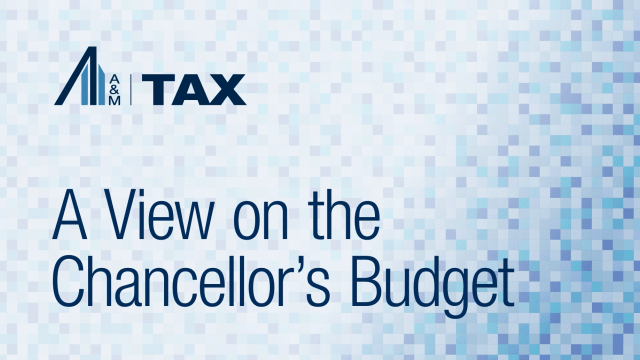New York Corporate Tax Reform Proposals: Will You Be a Winner or a Loser?
A long-anticipated major reform of New York State’s system of corporate income taxation, principally impacting taxation of the financial services industry, moved closer to reality with the Department of Taxation and Finance’s November 2009 release of its long-awaited proposal. In anticipation of draft language that could be submitted for legislative action early in the 2010 legislative session, the department has now released .
The department has anticipated Governor David Paterson’s intentions that may be reflected in his annual budget submission — that current conditions do not warrant a goal of “revenue neutrality.” Nevertheless, the office of tax policy continues to advocate for a “revenue neutral rate.” While the department’s tax policy staff continue to develop detailed proposals that will dramatically impact the effective tax rate of New York financial services taxpayers, the department’s stated intention is to reach “revenue neutrality” by reducing the current 7.1 percent corporate tax rate to 6.5%.
Whether revenue neutrality can ever be achieved, given the complexity of New York’s tax system and of the activities of the state’s major financial services taxpayers, is open to debate. However, it is certain that potentially affected taxpayers need to understand the major proposed changes, and must proactively determine whether these changes will result in their businesses being among the winners or losers.
Background
New York State’s Office of Tax Policy Analysis believes that the current set of laws governing the taxation of banks, broker/dealers, hedge funds and other financial services companies does not meet the basic requirements of sound tax policy.
Currently, a patchwork quilt of laws, regulations and interpretations leaves major differences between the taxation of depository banks, taxed under NYS Article 32, and affiliated investment banks, hedge funds and broker/dealers, generally taxed under NYS Article 9-A. Even more vexing is the differences in New York taxation between affiliated financial institutions and unaffiliated independent hedge funds and investment banks, all of which substantially compete for the same customers and provide substantially similar financial goods and services.
Over the past several years, changes in New York State law, regulations and case law have transformed the landscape of corporate taxation. The stated goal of these changes was to increase equity in taxation while both expanding the income tax base and lowering the effective tax rate. Some of these major changes were:
- Expansion of the scope of required combined reporting among taxpayers and 80-percent-owned affiliates based on existence of substantial intercompany transactions among the related companies;
- Expansion of theories of economic nexus to require taxation of affiliated corporations with no physical presence in New York — for example, the required taxation of credit card companies based on 1,000 or more in-state credit card holders;
- Narrowing of favorable investment capital/income treatment for financial services companies taxed under Article 9-A by virtual elimination of favorable treatment previously afforded to net reverse repo — repurchase agreement — income, and formal denial of this treatment to income from stock lending activities;
- Clarification of the apportionment rules requiring inclusion of in-state apportionment factors of non-taxpayer affiliated members included in a New York combined return;
- Requirement that captive real estate investment trust (REIT) and regulated investment company (RIC) affiliates are part of a New York combined reporting group, significantly limiting the benefits previously given these special purpose companies; and
- Continued reduction of the tax rate from 9 percent to the current rate of 7.1 percent applicable to banks under Article 32 and financial institutions under Article 9-A.
The Proposal
Despite the enacted broad changes in New York corporate taxation, the tax department believes that tax equity requires wholesale changes in the current system of financial services company taxation. The department believes equity demands that Article 32 (the bank tax) be eliminated in favor of a modified, expanded Article 9-A taxation of all non-insurance financial services companies. The newly detailed changes include the following:
- Corporations would be subject to tax under Article 9-A without a physical presence in NY when economic nexus is present.
- Net investment income, previously taxed under generally favorable “investment allocation” rules, would be exempt from NYS tax. Entire net income minus net investment income would result in business income, subject to apportionment and taxation.
- Alien corporations without a permanent establishment in the U.S. would be subject to NYS tax, the starting point for which would be IRC Section 882 effectively connected income.
- The exemption for dividends, interest and gains from subsidiary capital would be eliminated.
- Dividends and gains (or losses) from stock currently derived from subsidiary capital would be exempt as investment income if the stock meets the definition of investment capital. Such income qualifies if the stock is held more than six months and the subsidiary in not unitary. Dividends and gains from subsidiary stock would be treated as taxable business income.
- Interest income and gains from subsidiary capital debt would be treated as business income.
- Exempt investment income would be net of actual interest expenses (direct and indirect) attributable to that income. Alternatively, on an elective basis, a 60 percent deduction for investment income with no interest expense disallowance would be permitted.
- Dividends from unitary corporations not included in the combined group would be exempt from tax, and actual interest expenses attributable to that income would be disallowed. Electively, taxpayers could instead claim a 60 percent deduction for dividends qualifying as investment income with no interest expense disallowance.
- The “cash election” to treat income from cash as either business or investment income would be repealed.
- Partnership interests and the income derived from such interests would continue to be treated under the current “flow-through” methodology, except for partnership interests newly eligible for treatment as investment capital (i.e., non-unitary, limited partnership interests where the corporate partner has less than a 5 percent distributive share of partnership income, gain, loss or credits).
- Many provisions specifically of benefit to banking organizations taxed under Article 32 would be eliminated, such as:
- Exemption for income from international banking facilities (IBFs);
- The 22 ½ percent deduction for interest from government obligations and the 60 percent elimination for income from subsidiary capital; and
- The special deductions for bad debts; NY would re-couple with federal bad debt rules but not require a recapture of NY bad debt reserves.
- Special rules would be aimed at benefiting thrifts making residential mortgages and small community banks making small business loans.
- The financial services investment tax credit might be extended to an expanded range of qualifying activities.
- NY’s net operating loss (NOL) rules would be significantly modified, including an expansion of carryforward in alignment with federal provisions. Losses incurred prior to 2011 would be converted into tax credits, 1/15 of which would be usable each year for the next 20 years.
- Business income would be apportioned using a single-factor, customer-based sourcing of receipts. The payroll and deposits factor currently used for Article 32 apportionment would be eliminated.
- Complex rules governing receipts apportionment have been proposed. In general, income from “qualifying financial instruments” (those marked to market under IRC Section 475) would be sourced based on the location of the customer, but subject to an annual irrevocable elective 8 percent in-state apportionment. Income from non-qualifying financial instruments, including income from loans secured by real property and income from physical commodities, would be apportioned on a customer basis but not subject to the 8 percent election.
- Significant changes to combined reporting are also proposed. Chief among them are adoption of full unitary water’s-edge combined reporting and combined group inclusion of all domestic and alien affiliated corporations that are deemed domestic under the Internal Revenue Code (e.g., stapled and inverted corporate formations).
- The fixed dollar minimum tax would increase, with a sliding scale increase for taxpayers earning receipts over $50 million, to a new maximum of $200,000 for taxpayers with over $1 billion in receipts.
- The current capital-based tax would retain the current maximum of $10 million.
- The Gramm-Leach-Bliley transitional provisions would be extended to years beginning before January 1, 2011.
- The base broadening and new sourcing rules would be coupled with a rate reduction aimed at achieving revenue neutrality.
- NYS will seek to achieve greater conformity with New York City corporate taxation.
Alvarez & Marsal Taxand Says:
Whether you are satisfied or disgruntled by the current state of New York corporate taxation, the winds of corporate tax change continue to blow strong. The proposed changes may be aimed at achieving overall equity and tax neutrality, but such complex changes have to be understood and analyzed by tax professionals charged with advising management of their potential impact.
Before New York State finalizes the proposals and converts them to legislative language ready for consideration by NY’s legislature, it is urgent that you act now to determine the potential impact on your organization’s NY current and deferred effective tax rate. Since the promised reduced rate of tax has not been fixed, study of the proposal’s effect on your organization should be undertaken now, as the window of opportunity to affect the outcome may shut at any time.
It is our experience that analysis of these proposals can be a difficult and time-consuming exercise. But failure to analyze these complex measures in a timely manner would be unwise, given the fact that these proposals represent the most significant overhaul of the corporate tax system in over 50 years.
For More Information on this Topic, Contact:
Mark McCormick
Managing Director, Atlanta
404-260-4081
|
Brian Pedersen
Managing Director, Seattle
206-664-8911
|
Matthew Polli
Managing Director, Atlanta
404-260-4078
|
Donald Roveto III
Managing Director, New York
212-763-9632
|
Other Related Issues:
| 06/02/09 | |
| 05/13/08 | |
| 01/10/08 |
Feedback:
We would like to hear from you.
Disclaimer
As provided in Treasury Department Circular 230, this publication is not intended or written by Alvarez & Marsal Taxand, LLC, (or any Taxand member firm) to be used, and cannot be used, by a client or any other person or entity for the purpose of avoiding tax penalties that may be imposed on any taxpayer.
The information contained herein is of a general nature and based on authorities that are subject to change. Readers are reminded that they should not consider this publication to be a recommendation to undertake any tax position, nor consider the information contained herein to be complete. Before any item or treatment is reported or excluded from reporting on tax returns, financial statements or any other document, for any reason, readers should thoroughly evaluate their specific facts and circumstances, and obtain the advice and assistance of qualified tax advisors. The information reported in this publication may not continue to apply to a reader's situation as a result of changing laws and associated authoritative literature, and readers are reminded to consult with their tax or other professional advisors before determining if any information contained herein remains applicable to their facts and circumstances.
About Alvarez & Marsal Taxand
Alvarez & Marsal Taxand, an affiliate of Alvarez & Marsal (A&M), a leading global professional services firm, is an independent tax group made up of experienced tax professionals dedicated to providing customized tax advice to clients and investors across a broad range of industries. Its professionals extend A&M's commitment to offering clients a choice in advisors who are free from audit-based conflicts of interest, and bring an unyielding commitment to delivering responsive client service. A&M Taxand has offices in major metropolitan markets throughout the U.S., and serves the U.K. from its base in London.
Alvarez & Marsal Taxand is a founding member of Taxand, the first global network of independent tax advisors that provides multinational companies with the premier alternative to Big Four audit firms. Formed in 2005 by a small group of highly respected tax firms, Taxand has grown to more than 2,000 tax professionals, including 300 international partners based in nearly 50 countries.
To learn more, visit www.alvarezandmarsal.com or www.taxand.com.
© Copyright 2010 Alvarez & Marsal Holdings, LLC. All Rights Reserved.
Alvarez & Marsal | 6th Floor | 600 Lexington Avenue | New York | NY | 10022



